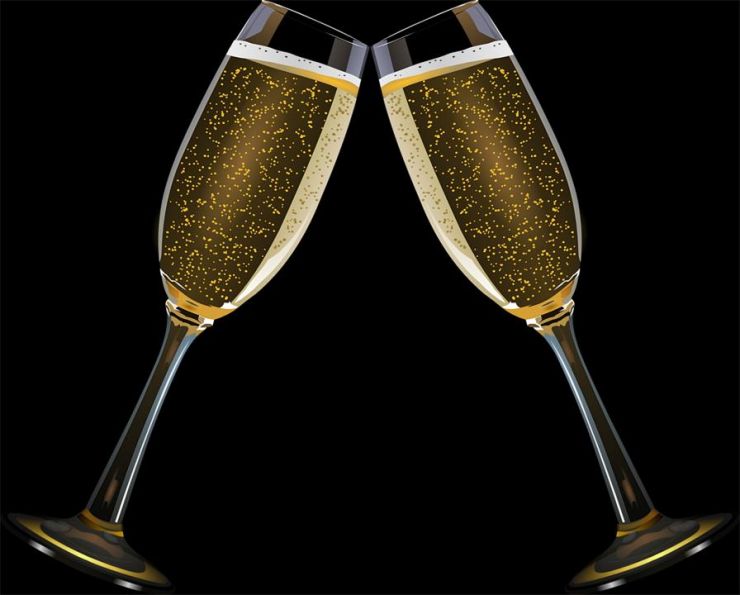Sparkling Wine by Any Other Name Is Not Champagne
Whether it's Champagne on New Year’s Eve or a Prosecco enjoyed on a sun-drenched patio, there is just something happy and celebratory about a sparkling wine! As sparkling wines run the gamut from sweet (e.g., Asti Spumanti, Prosecco) to dry (e.g., Brut Champagne), most of us enjoy some type of sparkling wine.
Is there a difference between sparkling wine and Champagne?
Although Prosecco (Italian), Cava (Spanish), Crémant (French outside of the Champagne region) and Sekt (German) may be produced in the exact same manner (i.e., in the Champenoise or Traditional Method) as Champagne, only sparkling wines from the Champagne region of France are allowed to be called Champagne.
High-quality sparkling wines are produced via the "Champenoise" method
A high-quality Champagne (and certain other sparkling wines) are produced in accordance with the “Champenoise” or “Traditional” method. The bubbles in a sparkling wine produced in accordance with this method are the result of secondary fermentation of the wine in its bottle - approximately a three month process.
Have you ever noticed that sparkling wine bottles are thicker than other wine bottles? This is to prevent the pressure from the bubbles that form during the secondary fermentation from causing the bottle to explode!
A still wine is placed into a sparkling wine bottle along with sugar and yeast that serve as catalysts for the secondary fermentation. During the secondary fermentation, bottles of sparkling wine periodically are rotated over a period of time in a device known as a riddling unit. Rotating the bottle causes the yeast and sugar to come into more comprehensive contact with the wine. The riddling unit was invented by a nun named Vueve Clicquot (sound familiar??).
High-quality Champagne has the flavor of bread
A high-quality Champagne is typically described as having a flavor of bread, owing to the yeast added during the secondary fermentation.
Champagne is typically a blend of wine from several years
Most Champagne is a blend of wine from multiple years (that's why most Champagne and other sparkling wines do not have a vintage year displayed on the bottle's label).
A vintage Champagne is made from grapes harvested in the same (special/good growing conditions) year.
Most Champagne is made from a blend of three different grapes – Chardonnay, Pinot Noir and Pinot Meunier. However, there are three other types of Champagne: Blanc de Noir – made exclusively from Pinot Noir; Blanc de Blanc – made exclusively from Chardonnay; and Rosé Champagne – made from the blending of white and red wines.
Cheaper methods produce inexpensive sparkling wines
Less expensive sparkling wines are produced using the methods of CO2 (i.e., carbon dioxide) injection, the Charmat Method and the Transfer Method.
CO2 injection is essentially the same process that is used to produce soft drinks.
The Charmat Method involves adding sugar and yeast to a tank of wine and allowing the secondary fermentation to take place in the tank.
The Transfer Method is a slight variation of the Charmat Method, whereby the wine is transferred to a bottle before the secondary fermentation is complete and spends some time in bottle in a riddling unit.
Labels disclose production method
Sparkling wines produced with the Traditional Method will have the words “Méthode Traditionelle, Méthode Classique, “Naturally Fermented in This Bottle” or, if Italian, “Classico” or “Talento” on their labels.
Sparkling wines produced with the Transfer Method will have the words “Naturally Fermented in Bottle” on their labels.
"...only sparkling wines from the Champagne region of France are allowed to be called Champagne."



